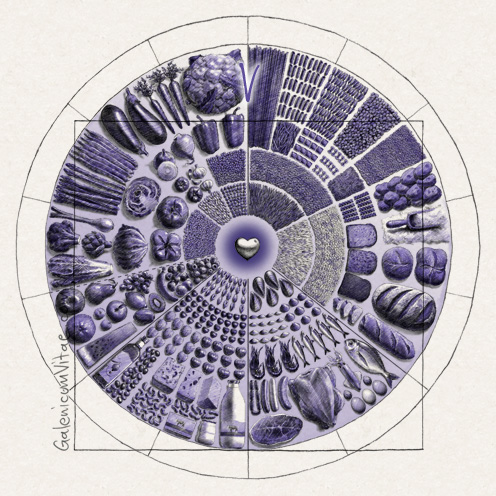Malnutrition
The Healthy Plate
The Healthy Plate is a graph that was created to show, in a simple and very visual way, which foods are needed for a healthy and balanced diet and how much of each should be consumed.
This plate includes all of the food groups without trying to restrict any of them, and can be adapted to different culinary cultures and different types of diets.
The plate is divided into 5 food groups:
- 5 parts cereals, rice, potatoes and pasta.
- 2 parts meat, fish and eggs.
- 2 parts dairy products, oils and nuts.
- 1 part fruit.
- 4 parts vegetables and legumes.
To achieve a healthy diet follow the guidelines of a balanced diet.
Every day, our body needs nourishment and therefore it is very important to maintain a rich and varied diet with adequate amounts of food. It is also important to drink two litres of water a day so that your body regulates all vital functions normally, as well as to facilitate the digestion of food.
To follow these dietary guidelines we have created the Healthy Plate to raise awareness about the amount and types of food that we should consume.
The circle is divided into five sections corresponding to the five major food groups:
1. Cereals, rice and pasta: This first group is the basis of our food and its components should be consumed daily in sufficient quantities at each meal. Its main function is to provide us energy and carbohydrates, vegetable protein and fibre. Some of the foods in this group are rice, bread, corn and pasta.
2. Meat and fish: The second group consists of products of animal origin. Daily but moderate consumption is recommended. Their main function is to build and repair tissues and to provide us with proteins, fats, vitamins, iron and calcium. This group includes all meats, fish and eggs, for protein and fat intake.
3. Dairy products, oils and nuts: Milk and its derivatives: natural yogurt (both normal and skimmed), curd, all types of cheese (including processed cheese spread), olive oil and nuts. Although adults do not require milk, you should increase how much you consume as it is rich in calcium, which is necessary to prevent bone diseases such as osteoporosis.
4. Fruits: Consuming 4-5 pieces of fruit per day is recommended. This food group provides us with vitamins, minerals and fibre. Eating fruits and vegetables daily has been associated with a lower risk of cardiovascular disease, some types of intestinal cancer and many other diseases.
5. Vegetables and legumes: Vegetables or salads, cooked or raw. Lentils, beans and chickpeas. These foods are low in fat and calories and rich in minerals and fibre, which provide essential vitamins.
All of the above are essential nutrients in a balanced diet, when they are eaten in adequate proportions. The Healthy Plate promotes eating fish, fruit, vegetables, low-fat dairy products and olive oil. The amount of sweets, pastries and saturated fat should be reduced.
For more information visit:
Nutrition
http://www.who.int/topics/nutrition/en
Fundación Dieta Mediterránea (Mediterranean Diet Foundation)
http://dietamediterranea.com/en
Food and Nutrition
http://www.usda.gov/wps/portal/usda/usdahome?navid=food-nutrition

 Digestive
Digestive  Blood
Blood Cardiovascular
Cardiovascular Dermatology
Dermatology Genitourinary,
Genitourinary, Hormones
Hormones Infections
Infections Oncology and
Oncology and Musculo-skeletal
Musculo-skeletal Mental health and
Mental health and Parasites
Parasites Respiratory
Respiratory Senses
Senses Various
Various




